Related Research Articles
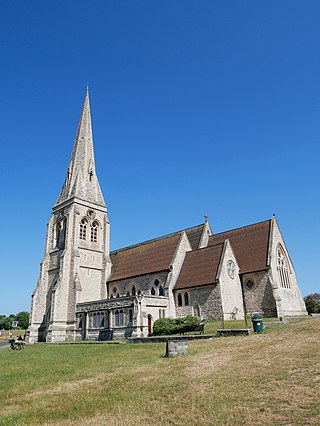
Blackheath is an area in Southeast London, straddling the border of the Royal Borough of Greenwich and the London Borough of Lewisham. Historically within the county of Kent, it is located 1-mile (1.6 km) northeast of Lewisham, 1.5 miles (2.4 km) south of Greenwich and 6.4 miles (10.3 km) southeast of Charing Cross, the traditional centre of London.
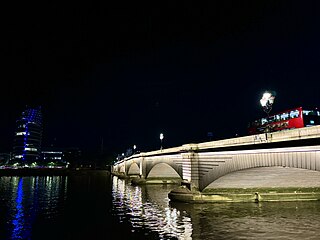
Putney is an affluent district in southwest London, England, in the London Borough of Wandsworth, five miles southwest of Charing Cross. The area is identified in the London Plan as one of 35 major centres in Greater London.

Roehampton is an area in southwest London, in the Putney SW15 postal district, and takes up a far western strip, running north to south, in the London Borough of Wandsworth. It contains a number of large council house estates and is home to the University of Roehampton.

Wandsworth is a London borough in South West London, England. It forms part of Inner London and has an estimated population of 329,677 inhabitants. Its main communities are Battersea, Balham, Putney, Tooting and Wandsworth Town.
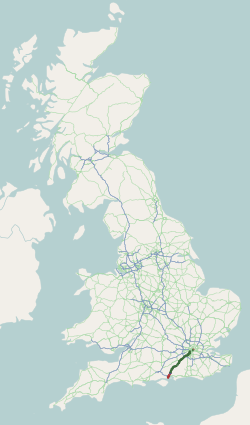
The A3, known as the Portsmouth Road or London Road in sections, is a major road connecting the City of London and Portsmouth passing close to Kingston upon Thames, Guildford, Haslemere and Petersfield. For much of its 67-mile (108 km) length, it is classified as a trunk road and therefore managed by National Highways. Almost all of the road has been built to dual carriageway standards or wider. Apart from bypass sections in London, the road travels in a southwest direction and, after Liss, south-southwest.
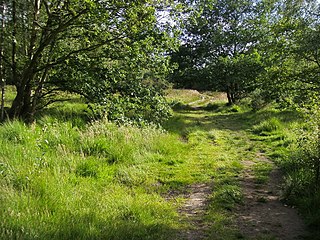
Wimbledon Common is a large open space in Wimbledon, southwest London. There are three named areas: Wimbledon Common, Putney Heath, and Putney Lower Common, which together are managed under the name Wimbledon and Putney Commons totalling 460 hectares. Putney Lower Common is set apart from the rest of the Common by a minimum of 1 mile of the built-up western end of Putney.

Southfields is a district of inner London located within the London Borough of Wandsworth, England, 5.6 miles (9 km) south-west of Charing Cross. Southfields is mainly residential, historically a part of Wandsworth itself, and is divided between the SW18 and SW19 postcode areas.

Kingston Vale with Kingston Hill is a district in the Royal Borough of Kingston upon Thames in south-west London. It is a residential area between Richmond Park, the much smaller Putney Vale, Wimbledon Common, Coombe/Coombe Hill and the Norbiton part of the very old borough. The main road is the A308 which is a through route for traffic passing to and from Kingston Hill to the A3 trunk road. Many of the branch roads are cul-de-sacs. It includes, toward the east and in the Vale, the only part of Kingston which drains eastward, that is, into Beverley Brook. The hill expanse, shared with Coombe and a golf course, has a hotel, some tall blocks overlooking Kingston, the edge of Kingston Hospital, the main campus of Kingston University London and faint remnants of dense woodland.
Putney Lower Common is an open parkland space in the London Borough of Wandsworth between the town centres of Putney and Barnes. It is part of Wimbledon and Putney Commons, lying 1.5 miles from the rest of the common area.

His Majesty's Naval Base, Portsmouth is one of three operating bases in the United Kingdom for the Royal Navy. Portsmouth Naval Base is part of the city of Portsmouth; it is located on the eastern shore of Portsmouth Harbour, north of the Solent and the Isle of Wight. For centuries it was officially known as HM Dockyard, Portsmouth: as a Royal Dockyard, Portsmouth functioned primarily as a state-owned facility for building, repairing and maintaining warships; for a time it was the largest industrial site in the world.

Putney Vale is a small community in south west London. It lies between Richmond Park and Wimbledon Common, to the east of Beverley Brook and Kingston Vale. Its main features are a housing estate, a superstore and a large cemetery. The A3 dual carriageway runs through it.
The following lists significant events that happened during 1981 in Singapore.
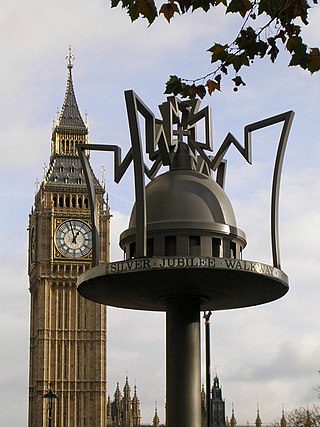
Walking is a popular recreational activity in London, despite traffic congestion. There are many streets that provide interesting walks, especially within historic central London. In addition there are attractive commons, parks, canals, and disused railway tracks that provide space for walks. This includes Wimbledon Common, Epping Forest, Hampstead Heath, and the eight Royal Parks: Hyde Park, Regent's Park, Richmond Park, etc. In recent years access to canals and rivers, including the Regent's Canal, and the River Thames has been greatly improved, and as well a number of long-distance walking routes have been created that link green spaces.

Sir John Fearns Nicoll was a British colonial administrator who served as Governor of Singapore from 1952 to 1955.
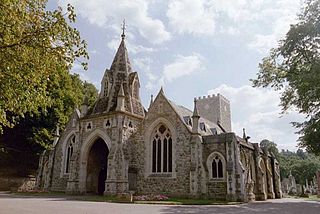
Putney Vale Cemetery and Crematorium in southwest London is located in Putney Vale, surrounded by Putney Heath and Wimbledon Common and Richmond Park. It is located within 47 acres (19 ha) of parkland. The cemetery was opened in 1891 and the crematorium in 1938. The cemetery was originally laid out on land which had belonged to Newlands Farm, which was established in the medieval period.
The 2013–14 Football League Two is the tenth season of the league under its current title and nineteenth season under its current league division format. The season began on 3 August 2013 and finished on 3 May 2014 with all matches that day kicking off simultaneously.

The Green Man is a public house in Putney in the London Borough of Wandsworth, on the edge of Putney Heath, parts of which date back to around 1700. The pub was once frequented by highwaymen and was a popular place for participants to fortify themselves before or after a duel on nearby Putney Heath.
Putney Hospital was a public hospital in the London Borough of Wandsworth, west of Putney town centre.

Wildcroft Manor is a historic site in Putney in the London Borough of Wandsworth, with private housing and a Grade II Listed iron gateway.
References
- ↑ "Eustratios Stephanos (Stephanos) Ralli". Christopher Long. Retrieved 1 August 2012.
- ↑ "Voluntary Hospitals, London". UK Parliament. 25 March 1948. Retrieved 1 August 2012.
- ↑ (Firm), Sotheby's (1919). "Valuable modern books the property of Col. Hargreaves, of Scio House, Putney Heath, S.W."
{{cite journal}}: Cite journal requires|journal=(help) - ↑ "Gilbert Scott Cockrill, ARIBA". Gorleston History. Retrieved 1 August 2012.
- ↑ "Sir John Fearns Nicoll". Singapore Infopedia. Retrieved 1 August 2012.
- ↑ "Wimbledon and Putney Common Conservators archive, file 134" (PDF). Retrieved 1 August 2012.
- ↑ "Welcome". Lynden Gate. Retrieved 1 August 2012.
- ↑ "Scio House, Putney". Parliamentary Debates (Hansard) . 13 July 1982. Retrieved 1 August 2012.
- ↑ "Ponds". Wimbledon and Putney Commons. Retrieved 31 October 2017.